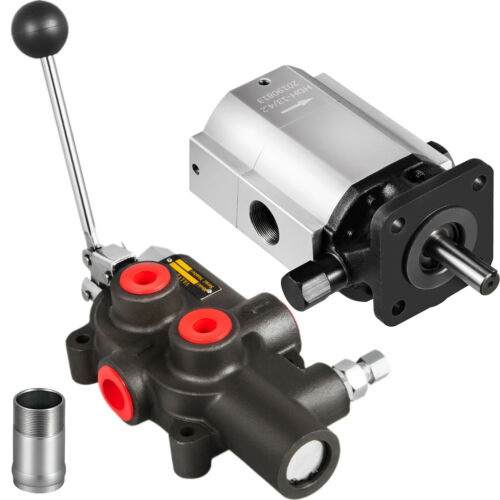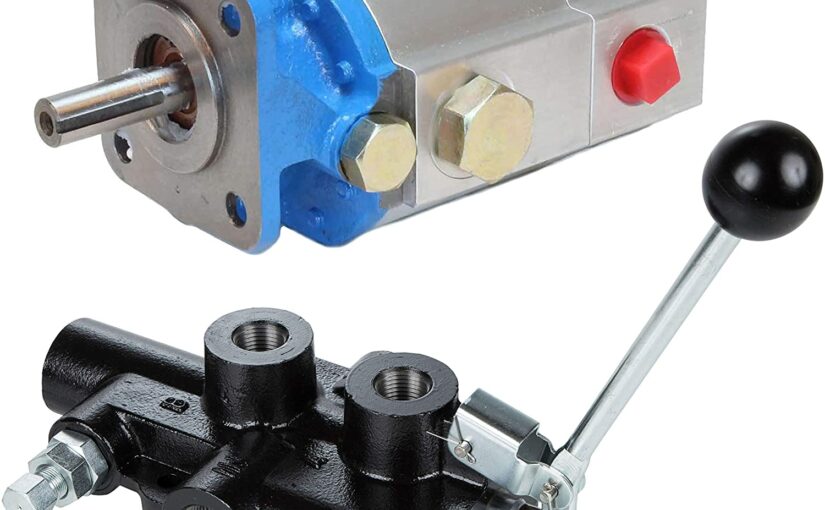When you need to know how many gallons per minute a hydraulic pump can pump, it can be helpful to know the gear ratio. Gear ratio is the number of inches of bore divided by the number of inches of stroke. This article will show you how to determine the gear ratio for a hydraulic pump and use that information to figure out how many GPM that pump can produce.
To determine the gear ratio for a hydraulic pump, you first need to know the dimensions of the pump’s bore and stroke. The dimensions of a hydraulic pump’s bore are the size of the pipe it uses to move fluid and the size of the gears inside the pump. The dimensions of a hydraulic pump’s stroke are how wide the piston travel is relative to how tall the cylinder is.
Once you have these dimensions, you can calculate the gear ratio by dividing the bore dimension by the stroke dimension. The Gear Ratio for a hydraulic pump is found by:
Gear Ratio = (Bore Dimension) / (Stroke Dimension)
For example, if you have a hydraulic pump with a bore diameter of 1 inch and a stroke diameter of 2 inches, your Gear Ratio would be 1/2.

What is a hydraulic pump?
A hydraulic pump is a machine that uses hydraulic pressure to move objects or fluids. Hydraulic pumps are used in many industries, including the automotive, steel, mining, and agricultural sectors. A typical hydraulic pump can produce up to 1,000 GPM (gravitational pull per minute), making it an effective tool for moving large amounts of fluid.
Hydraulic pumps can be classified into two main categories: rotary and reciprocating. Rotary pumps use a rotating wheel or impeller to move the fluid, while reciprocating pumps use pistons to move the fluid.
Hydraulic pumps are often used in conjunction with other machines, such as compressors and water tanks, to create a fluid flow system.
What are the benefits of using a hydraulic pump?
Hydraulic pumps are an efficient way to move fluid. They can be used in a variety of industries, including mining, oil and gas production, and water supply. These pumps are especially useful in high-volume applications, where speed and efficiency are critical. Here are some of the benefits of using a hydraulic pump:
• They’re fast: A hydraulic pump can move a lot of fluid quickly. This is especially important in high-volume applications, where time is critical.
• They’re efficient: Hydraulic pumps use less energy than other types of pumps. This means they’re less expensive to operate and maintain.
• They’re durable: Hydraulic pumps are strong and can handle a lot of pressure. This makes them ideal for high-volume applications.
What is GPM?
There is no one definitive answer to this question since it can vary depending on the type of hydraulic pump and the application. However, generally speaking, GPM (gallon per minute) is a measure of how much fluid a pump can move in a given amount of time. This can be used to determine how quickly a pump can discharge water or other fluids.
Some common applications for hydraulic pumps include irrigation, mining, construction, and manufacturing. In each of these cases, it is important to have a reliable and powerful pump that can handle high volumes of fluid.
There are many different types of hydraulic pumps on the market, each with its own unique specifications. If you are looking to buy a new hydraulic pump, it is important to do your research and compare different models before making a decision.
What do GPM stands for?
GPM stands for gallons per minute. This is the measurement of how fast a hydraulic pump can move fluid.
How do you measure GPM?
There are a few ways to measure GPM. The most common way is to use a water meter. However, this can be difficult in some cases, such as if the piping is underground or if the pump is located in a water-soaked area. Another way to measure GPM is to use a flow meter. This is usually easier to use, but it can be more expensive.
Another way to measure GPM is to use a water consumption monitor. This measures the amount of water that goes into the meter over a period of time.
How do you find the GPM on a pump?
Finding the GPM on a hydraulic pump can be a little tricky. There are a few different methods that you can use to calculate the GPM. One way is to use a pressure gauge to measure the pressure that the pump is giving off. Another way is to use a flow meter to measure how much fluid is being pumped out per minute.
If you are unable to find the GPM on the pump, you can usually find it online or in a hydraulic manual.

How to Identify the GPM of a pump
If you are looking to buy a hydraulic pump, the first thing you should do is identify the GPM of the pump. This is easy to do using a flow meter. A flow meter can be purchased for around $40 and will measure the amount of water flowing through the pump in cubic feet per minute. Once you have identified the GPM of the pump, you can compare it to the requirements of your project.
If you are looking to buy a hydraulic pump, the first thing you should do is identify the GPM of the pump. This is easy to do using a flow meter. A flow meter can be purchased for around $40 and will measure the amount of water flowing through the pump in cubic feet per minute. Once you have identified the GPM of the pump, you can compare it to the requirements of your project.
Conclusion
If you are looking to purchase a hydraulic pump, the first thing you want to do is determine the required GPM. This will help you select the right type of hydraulic pump for your application. Here are three easy ways to measure how many GPM a hydraulic pump is:
1) Use a flow meter: This method uses a small device that measures the amount of water flowing through it in real time. When purchasing a flow meter, be sure to specify the type and size of pipe that needs to be measured.
2) Check the SMP (Specific Maximum Power): This rating tells you how much power your machine can deliver over its lifetime under specified conditions (ie., operating pressure and speed). It’s usually found on the back or side of your machine.
3) Calculate GPM based on engine displacement: Dividing horsepower by rpm will give you an approximation for GPM output.
How do you tell how many GPM a hydraulic pump is,please click topkitparts see more

